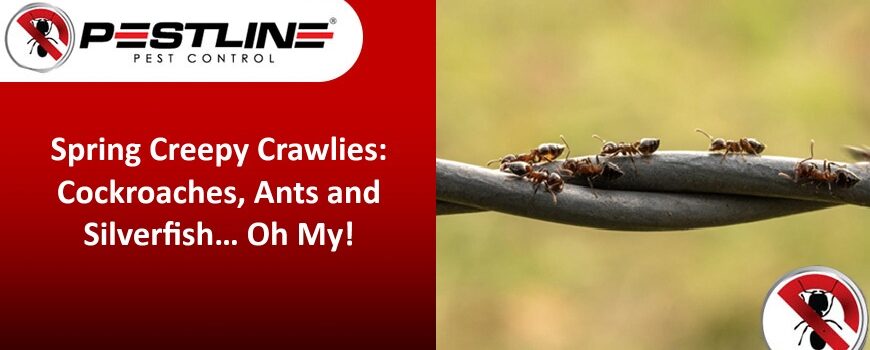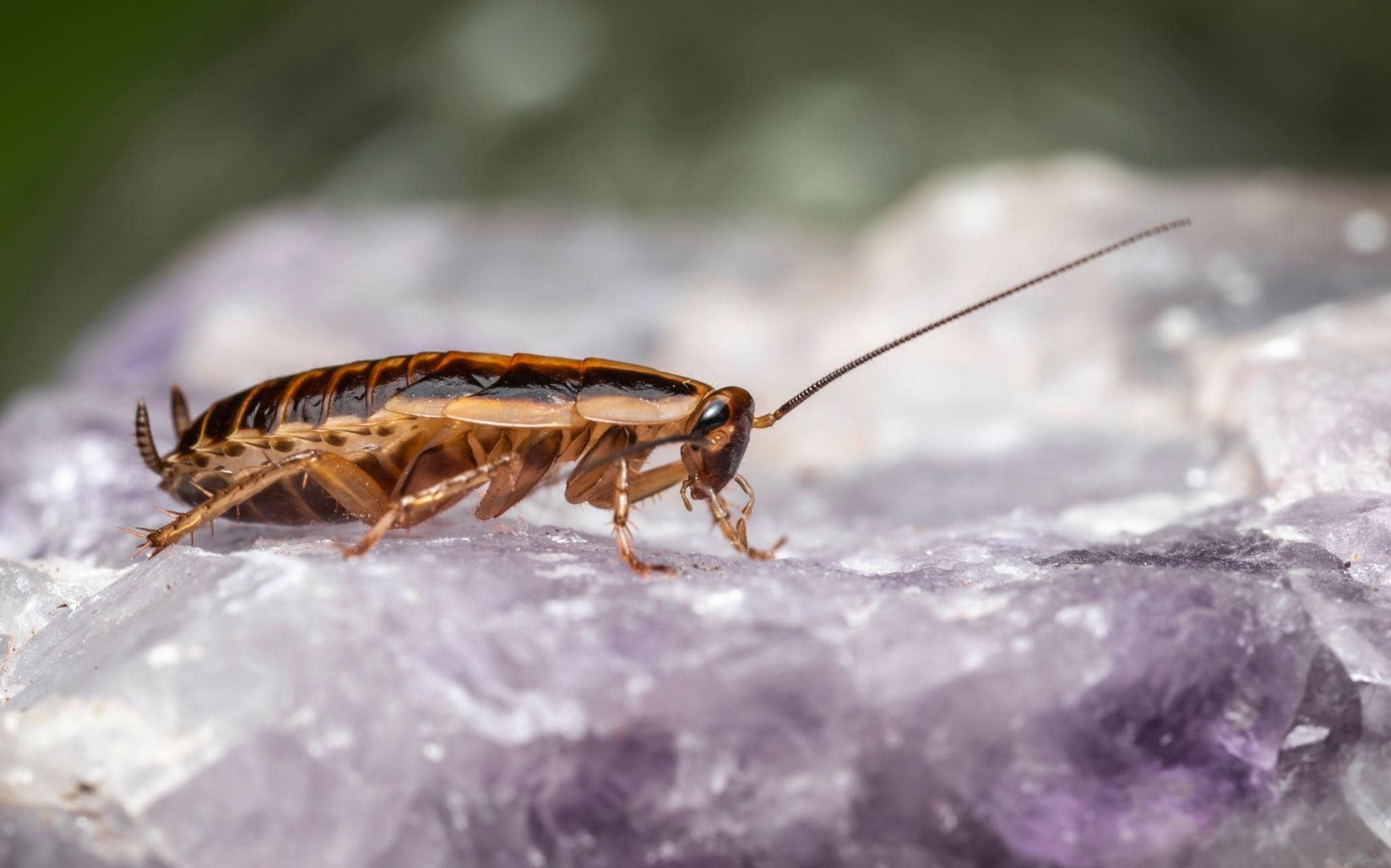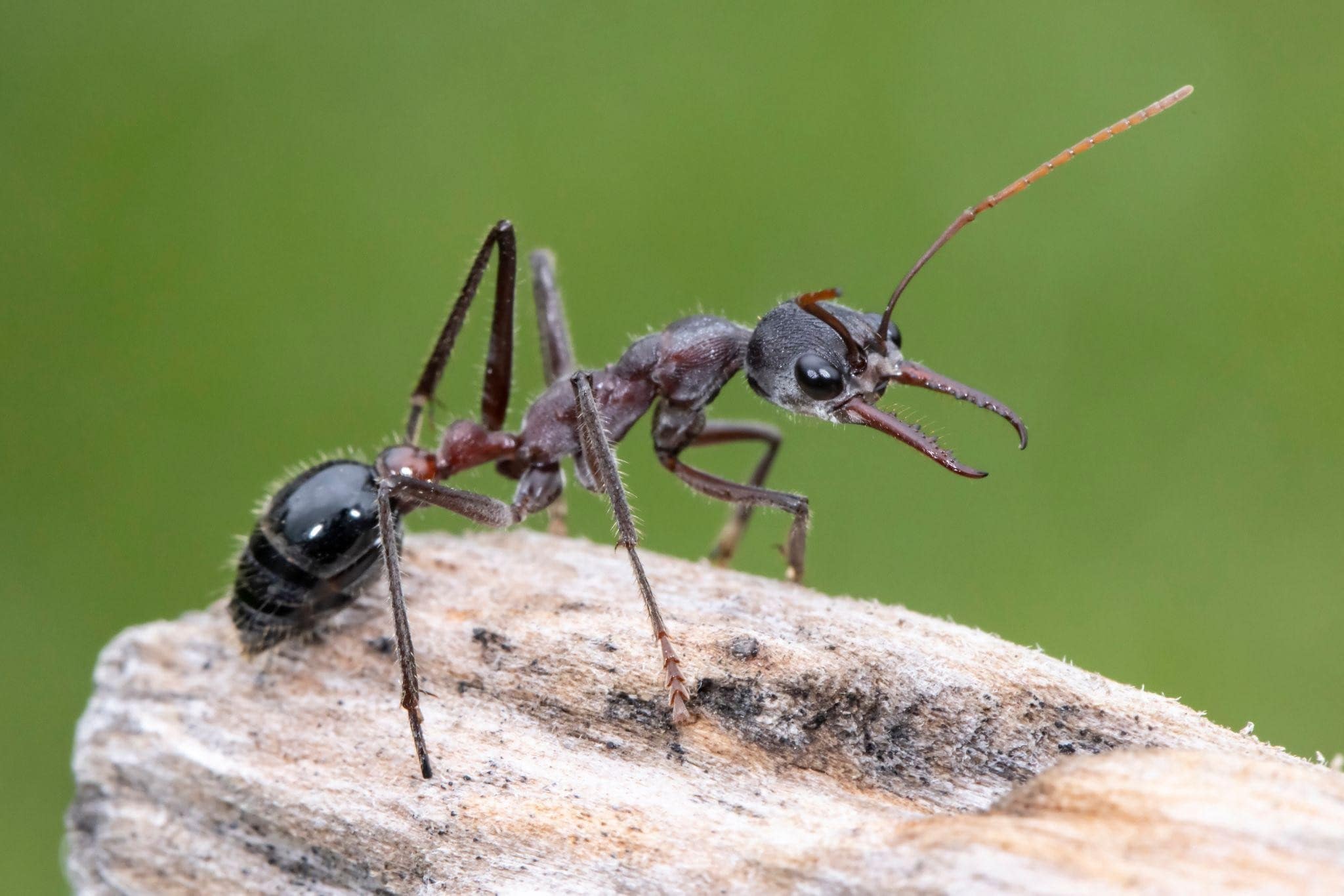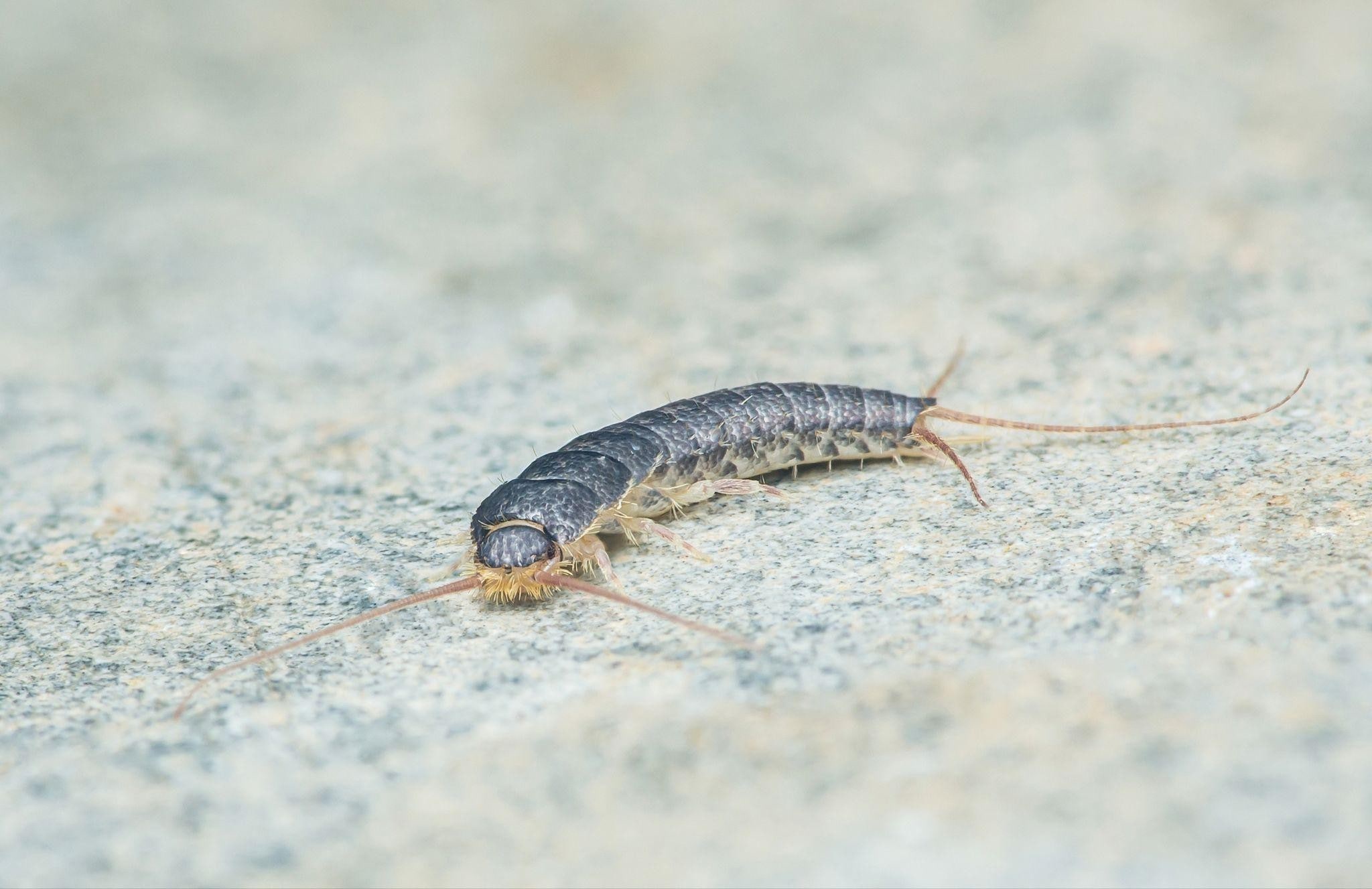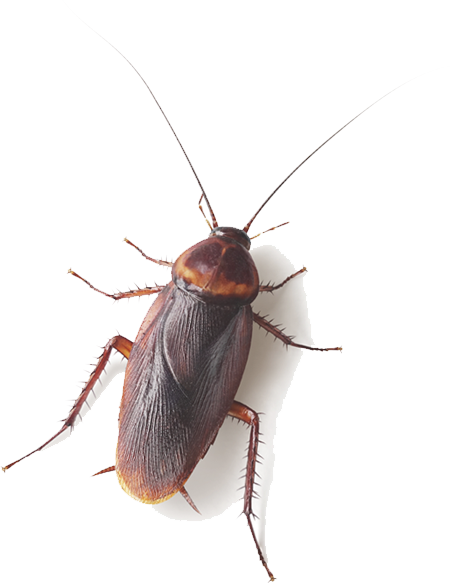Spring Creepy Crawlies: Cockroaches, Ants and Silverfish… Oh My
Spring sunshine, open windows and fresh air — it’s the season we all long for all year. However, as you’re basking in the warmer weather, you might not be the only ones enjoying it. Spring heralds a season of pests: cockroaches, ants, silverfish and more, coming out of hibernation to forage for food, water and shelter.
So if you’re starting to spot ants trailing around your kitchen cupboards, or you’re suddenly noticing signs of German cockroaches or silverfish, you’re not alone. Spring pests are masters at invading even the cleanest of homes, and once they’ve made themselves at home, they breed and multiply.
Thankfully, we at Pestline are experts at removing these home invaders. Our domestic pest removal services across Melbourne are delivered by licensed technicians who tackle home infestations before they become a bigger problem, with safe and targeted treatments to keep your home, family and pets protected all year round.
So before those creepy crawlies set up shop, let’s find out what causes a pest explosion in spring, and what early warning signs you should be on the lookout for in your home.
Table of Contents
- Spring Is Here, and So Are the Pests
- Cockroaches: The Unwanted Roommates
- Ants: The Persistent Marchers
- Silverfish: The Silent Destroyers
- Why Spring Pest Activity Matters
- Protect Your Home with Pestline
Spring Is Here, and So Are the Pests
Spring is a time of renewal. Warmer weather, blooming flowers, and a fresh breeze through the house are a welcome sight after a long, cold winter. However, the same weather that works so well for us also creates an ideal environment for insects. Warm temperatures, increased humidity, and food and water sources provide the perfect storm for pests to flourish.
Many of the most common household pests will become active in your home in spring after lying dormant during the winter months. Breeding, foraging, and looking for shelter inside the house becomes top priority for them (particularly in kitchens, bathrooms, and other places where warmth and moisture are plentiful).
Clean homes are not immune to the effects of spring pest problems either. Pests can easily find their way inside through open doors and windows, and the changing weather can prompt insects to explore new places to nest. A few stray insects in your home can quickly lead to a more widespread infestation if caught early.
Cockroaches: The Unwanted Roommates
Few insects make people as squeamish as cockroaches. It’s no wonder, since these pests are notoriously hardy. Cockroaches have been around for millions of years and are thriving all over the world for a reason. They can live just about anywhere they can find a little warmth, moisture, and a reliable food source.
Springtime is the perfect time for cockroaches inside Australian homes. Higher humidity and leftover crumbs can give them everything they need to survive. Even a small leak can give a cockroach colony the moisture it requires. Cockroaches are nocturnal pests, which means they try to remain hidden during the day and come out at night to forage for food.
By the time you actually spot one, there are likely to be many more nearby.
Common Signs of German Cockroaches
German cockroaches are fast, nimble insects that can live in almost any warm, humid environment (especially your kitchen, bathroom and laundry room). They are usually out foraging for food and water at night and hiding in dark, enclosed spaces during the day, such as cracks in walls or floors, behind appliances or inside cupboards, where food and moisture are nearby.
While the first sighting is always memorable, in many cases, there are a few subtle signs that give them away long before you actually spot one. These include small, dark droppings that resemble coffee grounds, pale egg cases hidden in tight corners and a faint, musty odour in small, enclosed areas. If you see cockroaches dashing for cover when the lights are turned on, this is usually an indication that the infestation is already established.
Many people are tempted to ask the question, “How to get rid of cockroaches?” once they start to turn up. However, German cockroaches are extremely resilient and can often resist many of the DIY sprays on store shelves. Cockroach eggs are also particularly robust, while just a few hard-to-reach hiding spots will quickly become a source of reinfestation.
If you’re seeing some of the earlier tell-tale signs, it’s usually best to get on top of the issue as quickly as possible with a comprehensive inspection and targeted treatment from the friendly experts at Pestline to stop the problem in its tracks.
Are Cockroaches Clean? The Truth About Hygiene Myths
Many people have the impression that cockroaches will only invade homes which are unclean. However, this is far from the truth. Cockroaches will move in where the opportunity presents itself, and any home is an opportunity, as long as it contains food, warmth, moisture and shelter.
Your kitchen may be kept very clean, but if there is food residue left on dishes or worktops, or uncovered pet bowls and dark, moist areas, these insects will still be attracted. Cockroaches will also enter your home if there are gaps around doors and windows or plumbing and utility entry points. Once inside, cockroaches will move freely around your home and make themselves at home, feeding and nesting.
The problem is that cockroaches themselves are not clean. They breed and travel through drains, garbage bins and sewers, so are already carrying bacteria and disease pathogens. As they move around your home, foraging on benchtops, plates and stored food, these germs will be transferred and the resulting contamination could be putting your family’s health at risk. That is why it is important to respond quickly and effectively, even if you only think you have seen one or two.
Can Cockroaches Fly? What You Need to Know
Cockroaches are known for their adaptability, but their activity levels change with the seasons. In winter, they are less active, seeking out warm, sheltered areas to conserve energy. During colder months, you are unlikely to spot them skittering across the kitchen floor or buzzing around the light; they are more likely to be found hiding in cracks and crevices, behind appliances, or inside wall cavities.
Most species have wings, including the German cockroach, but they rarely use them indoors. Flying is generally only used in warmer, more humid conditions, which is why you might start to see more as spring approaches. As the weather warms, cockroaches become more active and roam around at night to search for food and water.
This behaviour can help explain how an infestation can seem to “come out of nowhere” in the spring. While you might not have seen any activity in the winter, a few cockroaches may have been quietly hiding in your home, waiting for the weather to warm so that they can start reproducing.
Ants: The Persistent Marchers
Ants are some of the most prominent visitors in and around our homes during the warmer seasons. These small insects are highly organised and instinctively driven by the urge to survive, so they are always on the move in search of food, water and new nest sites.
Spring is perfect for their activity as the longer days, higher temperatures and increased humidity entice them to come out of their hidden nests to search for food more often. A small trail of ants is often just the tip of the iceberg, suggesting there may be a large colony in the vicinity, quietly expanding and sending scouts out to investigate every possible food source.
Why Ants Invade Homes in Spring
Spring is a critical season for ants. When temperatures rise and the days become longer, they know that the active season is upon them. Ants venture out from their dormant nests and begin to explore further afield, looking to expand their colonies.
It is this increase in activity that may seem so unnatural to us. It’s not that ants have suddenly decided to target your home; they are simply doing what they do in the springtime, instinctively increasing their numbers and seeking new real estate for their colonies. Even if your house was ignored all winter, it can easily become a target simply because of the exploratory and reproductive work that is done in spring.
What Attracts Ants Indoors
Ants are never-ending explorers. However, some houses are more attractive to them than others. Food is always a good start. Crumbs, spills, and improperly stored pantry items are all common in most homes. In fact, even small amounts of sugar, grease, or pet food can be enough to send out foraging scouts.
Moisture is another big one. Ants can be incredibly sensitive to humidity and moisture. If there are damp surfaces, leaks, or condensation, you can bet ants will be drawn to them, especially in bathrooms, kitchens, and laundry rooms.
Ants are also expert navigators, and they will lay down pheromone trails for other colony members to follow. After a while, even a small food or moisture source can be enough for a whole horde to be exploring your home.
Short-Term vs Long-Term Ant Control Solutions
Ant control strategies can be short or long-term. If you only need quick relief from ants, then bait stations, sprays, and wiping up trails can help. The problem is that these methods may only kill the ants on the surface, and they may not affect the nest or the source of the colony.
Ant control treatments that last longer require longer-term strategies. It is important to know how to get rid of ants by attacking the entire colony, cutting off food and water sources, and more. This may involve professional inspections, treatments of nests, and other options for long-term control.
A combination of fast relief and long-term control can help homeowners keep ant activity at bay and avoid repeated infestations.
Silverfish: The Silent Destroyers
Silverfish are little, wingless insects that, due to their size and quiet nature, are hard to detect, which means they are particularly well-equipped for sneaking right in.
Once inside your home, their activity increases with the onset of warm weather in the spring, as they hunt for warm, humid places to scuttle around in peace. They can slowly build up numbers in undisturbed nooks and crannies, or storage spaces and other damp areas, like bathrooms or basements.
Since they are mainly nocturnal and don’t like to move around in the light, many homeowners won’t notice an infestation until they’re already there.
What Are Silverfish?
Silverfish are small, wingless, and fish-shaped insects. They are easily identified by their silvery-grey colouring and their tendency to move quickly with a wriggling motion. They are generally 1–2 cm long and are flat with long antennae. These insects are agile and able to fit into small places.
Silverfish are hardy and may live for months without eating. They are often difficult to eliminate because they are able to thrive in a wide variety of conditions. This, along with their life expectancy and reproductive habits, can lead to a gradual build-up of a population without the homeowner’s knowledge.
Do Silverfish Eat Clothes and Paper?
Silverfish are known to eat starchy substances and protein-based foods. This includes paper, books, and even clothing such as certain textiles. Natural fibres including cotton, linen, silk and wool can be at risk of damage if silverfish are present in large numbers for an extended period of time, particularly in dark or undisturbed storage areas.
The key point is that they won’t eat your entire wardrobe in one night, but if left alone can cause holes, yellow stains, or frayed edges on clothing over time. The damage silverfish do is often slow and can go unnoticed until there is a lot more significant damage that is then visible to the eye. Acting fast when you first see signs of silverfish can help you avoid damaging your valuable clothes and other items around your home.
Where Silverfish Hide in Your Home
Silverfish can easily find their way inside your home through small cracks and gaps in doors and windows, or through items such as packaging and storage boxes. Since they are so small and flat, even the smallest of openings are sufficient.
They are likely to come in through undisturbed areas such as behind skirting boards or in cupboards and corners of cupboards, under furniture, or boxes for storage. These insects can find their way in via any small crack, gap, or crevice. They can also come through packaging, boxes, or other items from storage, if the latter have been stored in damp and dark areas.
If you are wondering how to get rid of silverfish, the most successful way to manage these pests is a combination of inspection, habitat reduction, and targeted treatment. Start by decluttering and removing or sealing off potential hiding spots. It is important to reduce humidity in key areas and to declutter storage areas.
For more significant infestations or ongoing populations, Pestline’s professional pest control can help locate nests and treat them with a targeted solution that will reach the cracks and crevices silverfish use to hide to help avoid a recurrence.
Why Spring Pest Activity Matters
Just because you may not have seen any activity throughout winter doesn’t mean that you have been pest-free. This is often the time that infestations can go undetected, so it’s important to be on the lookout for any signs of pests as soon as the weather begins to get warmer: one or two insects this early on in the year could be a sign of a much larger issue nearby.
By knowing the ebb and flow of the seasons, you can keep an eye on your property and ensure that what could be a costly infestation is nipped in the bud before it gets out of control. And a professional pest control company can be the key to being one step ahead of the seasonal pests. At Pestline, we offer a bespoke service for all properties, from single-family homes all the way up to larger warehouse-style properties.
The team will be able to put in place annual pest management calendars and early intervention treatment plans that will identify any infestations as soon as they arrive and prevent them from getting out of hand. After all, early prevention isn’t just about removing pests, it’s about ensuring your property stays clean, safe and comfortable all year round.
Protect Your Home with Pestline
Spring pests don’t wait — and neither should you. At Pestline, our Melbourne pest control experts are here to protect both homes and commercial properties from infestations before they get out of hand. We provide tailored solutions for domestic households as well as larger sites like warehouses, offices and retail spaces, ensuring effective and long-lasting results.
We proudly service the south-eastern suburbs of Melbourne, helping local homeowners and businesses maintain pest-free environments all year round. Whether you’re dealing with cockroaches, ants, silverfish or other seasonal invaders, our licensed technicians can identify early warning signs and implement the right treatment plan.
Don’t let pests take over your property. Contact Pestline today for expert pest control and take the first step toward a safe, clean and comfortable home or workplace.

